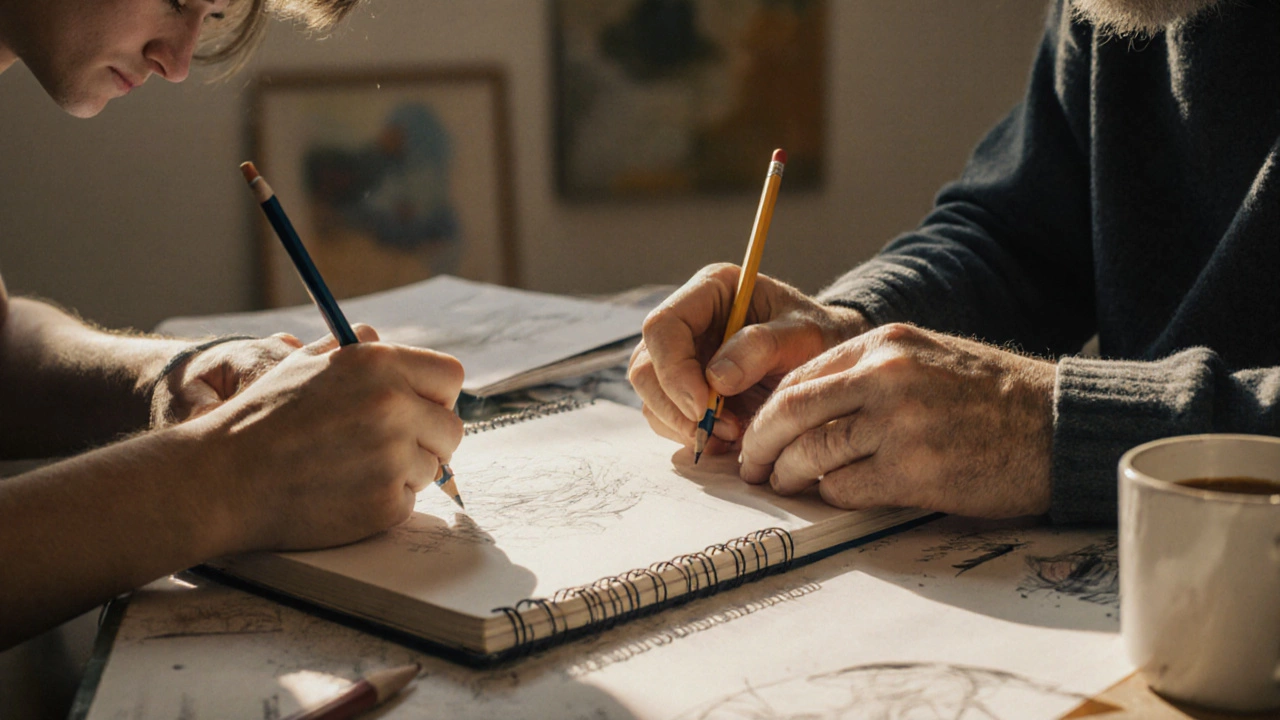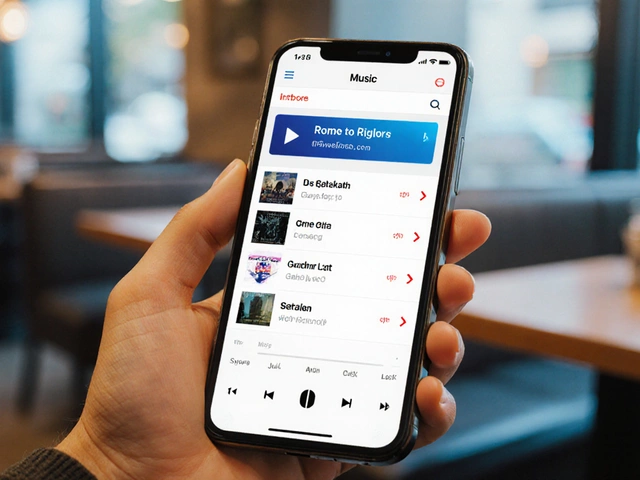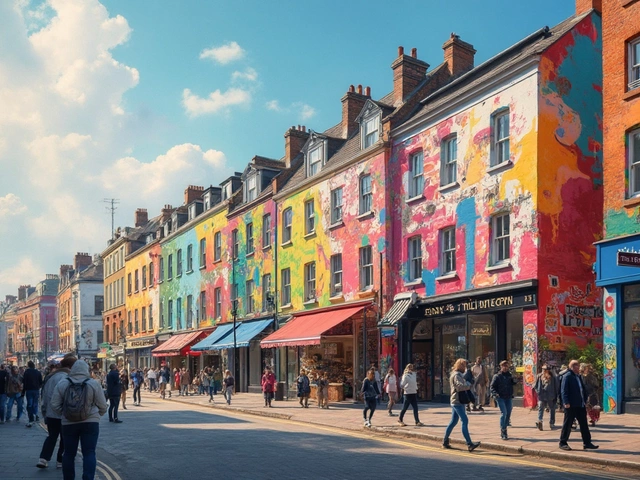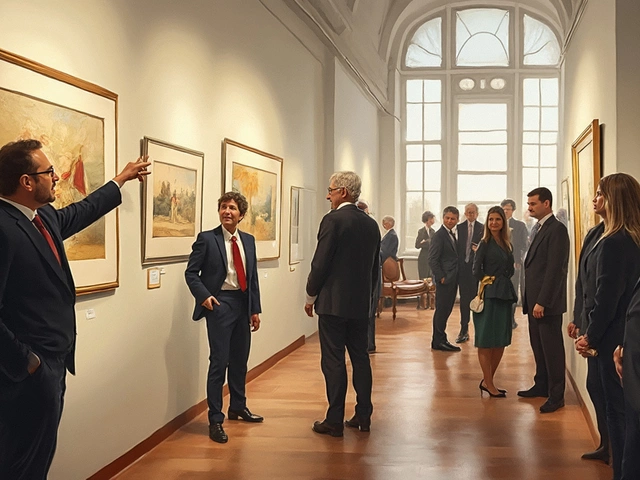Artistic Practice Progress Calculator
How Long Does It Take to Become an Artist?
Discover how consistent practice builds artistic skill. The article explains that artistic ability isn't inherited, but developed through dedicated practice. Enter your practice schedule to see how long it takes to develop your skills.
Your Progress
Based on 10,000 hours practice ruleTo reach skill level with minutes of practice per day, you'll need:
Remember: The article explains that artistic skill is developed through consistent practice, not genetic inheritance. You don't need to be 'born with talent'—just willing to practice.
Ever looked at a painting and thought, They were just born with this gift? It’s a common thought. You see someone sketching effortlessly, mixing colors like magic, or turning chaos into something breathtaking-and wonder if they got lucky in the genetic lottery. But here’s the truth: no one is born knowing how to make art. Not one person. Not even Picasso.
What Does Science Say About Artistic Ability?
There’s no single "art gene." Scientists haven’t found a DNA sequence that turns someone into a painter, sculptor, or digital artist. That doesn’t mean genetics play no role. Studies in twins-especially identical twins raised apart-show that creativity and visual-spatial skills have a heritable component. One 2021 study from the University of London tracked over 1,200 pairs of twins and found that about 30% of variation in artistic inclination could be linked to genetic factors. But that’s not the same as being born an artist.
What genes might influence? Things like hand-eye coordination, sensitivity to color and shape, even how your brain processes patterns and emotion. These traits can make learning art feel easier for some people. But they’re not a guarantee. Think of it like height: you might inherit genes that make you tall, but without good nutrition and exercise, you won’t reach your potential. Art is the same.
Practice Over Innate Talent
Look at the most celebrated modern artists. Frida Kahlo didn’t start painting until she was 18, after a bus accident left her bedridden. She had no formal training. Her early work was clumsy, raw, and full of mistakes. But she painted every day. For years. That’s what turned pain into power.
Same with Jackson Pollock. He struggled for decades before his drip paintings made him famous. He tried realism, social realism, surrealism-none stuck. He kept experimenting. He failed. He tried again. His breakthrough didn’t come from genius. It came from persistence.
Neuroscience backs this up. When you practice drawing or painting regularly, your brain physically changes. The motor cortex grows thicker. The visual cortex becomes more efficient at recognizing shapes and depth. Your hippocampus, responsible for memory, gets better at storing visual references. This isn’t magic. It’s biology. And it happens to anyone who puts in the time.
The Myth of the "Natural" Artist
There’s a dangerous myth: if you’re not "naturally" good, you shouldn’t bother. It stops people before they even start. I’ve seen students in Vancouver art schools quit after their first critique because they thought they "weren’t cut out for it." But the ones who stuck around-the ones who kept sketching in cafes, who copied Old Masters on weekends, who watched YouTube tutorials at 2 a.m.-those are the ones who improved. Fast.
Art schools don’t admit people because they’re "talented." They admit people who show curiosity, discipline, and the willingness to learn. I’ve taught beginner classes where someone couldn’t draw a straight line on day one. Six months later, they were creating abstract pieces that moved people. What changed? Not their genes. Their habits.
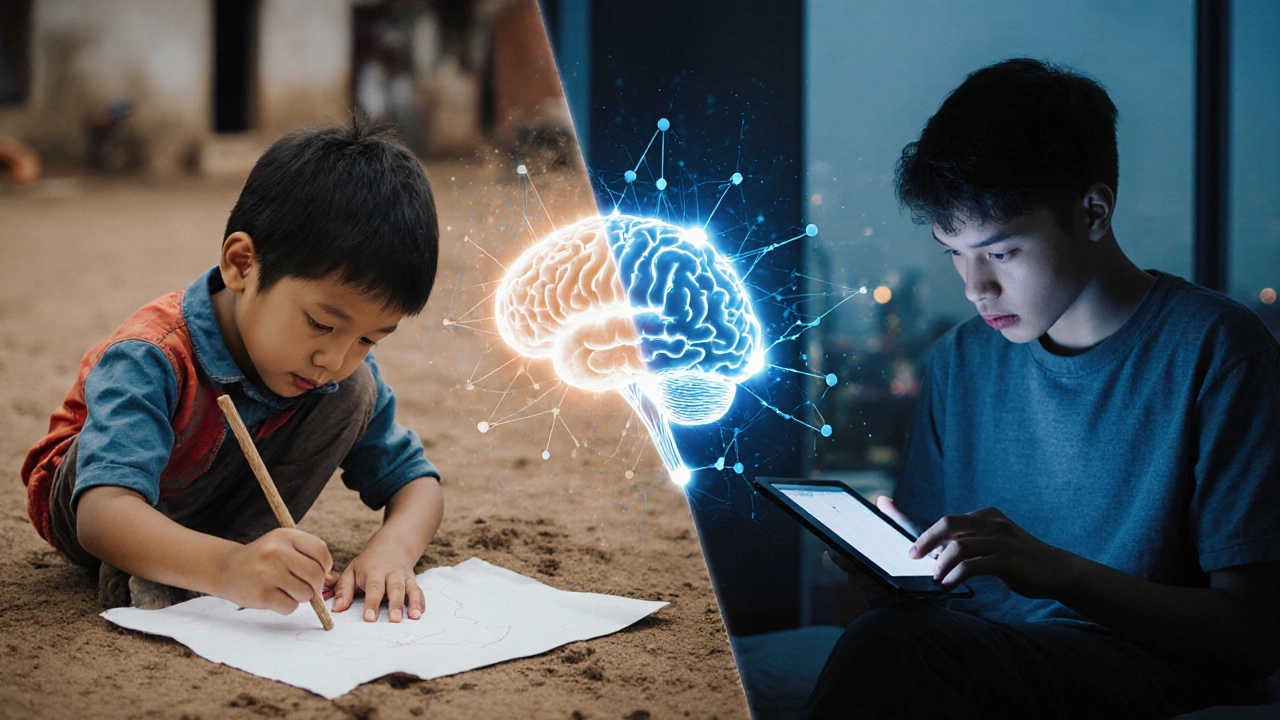
Environment Matters More Than You Think
Genes set the stage. Environment writes the script. Growing up around art makes a huge difference. Kids who see their parents sketching, who visit galleries, who have access to cheap paints and paper, who hear conversations about color and composition-they absorb it. They don’t need to be "born with it." They just need to be around it.
That’s why socioeconomic status often looks like a talent gap. A child in a rural village with no art supplies won’t look like a "natural artist" compared to a kid in New York with a studio apartment and a subscription to Artforum. But give them the same tools, the same encouragement, the same time-and the results even out.
Modern art thrives on diversity. It doesn’t need perfect technique. It needs honesty, risk, and voice. Those things come from experience, not DNA.
Can You Learn to Be an Artist?
Yes. Absolutely.
You don’t need to be born with a paintbrush in your hand. You need to want to see the world differently. You need to be willing to sit with your mistakes. To redraw the same apple 50 times. To try a new medium even when it feels stupid. To look at a blank canvas and not fear failure-but wonder what might happen if you just started.
Art is a skill, like playing guitar or coding. You don’t need a "music gene" to write a song. You don’t need a "coding gene" to build an app. You need practice, feedback, and patience.
And here’s the best part: the more you practice, the more you start to notice things you never saw before. The way light hits a coffee cup. The rhythm of a street vendor’s voice. The way shadows bend around a bicycle. That’s not talent. That’s training. That’s attention.
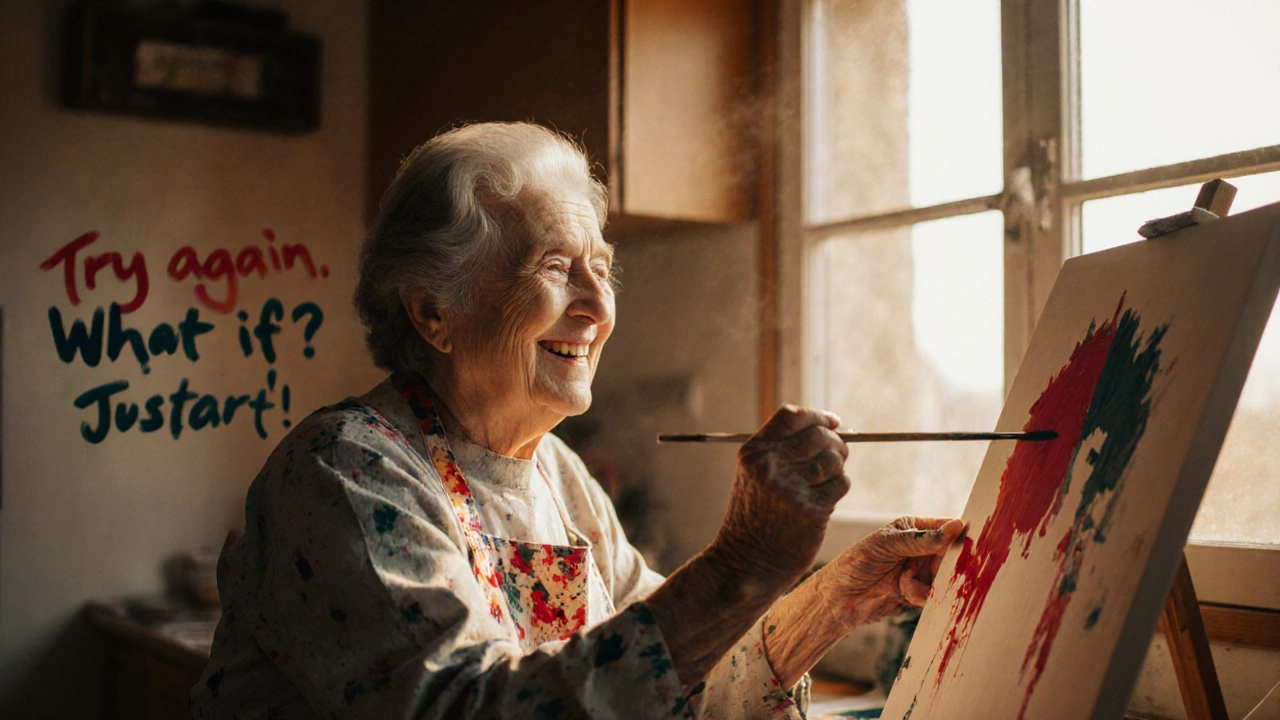
What Actually Makes a Good Artist?
Good artists aren’t the ones with perfect lines. They’re the ones who keep going. Who ask questions. Who aren’t afraid to be wrong. Who notice what others ignore. Who turn frustration into fuel.
Modern art isn’t about replicating reality. It’s about expressing inner worlds. And those worlds aren’t inherited. They’re built-through observation, through failure, through curiosity.
There’s no shortcut. No genetic advantage that replaces 10,000 hours. But there’s also no barrier. No birthright you’re missing. If you want to make art, you already have everything you need: hands, eyes, a mind that wonders. All you have to do is start.
How to Start, Even If You Think You’re "Not Good"
- Buy a $3 sketchbook and a pencil. No fancy supplies needed.
- Draw one thing every day for 30 days. A shoe. A window. Your coffee mug.
- Don’t judge it. Just do it.
- Visit a local gallery once a month. Look at the work. Ask yourself: "What would I try if I copied this?"
- Watch one 10-minute art tutorial a week. No need to master it-just expose yourself.
- Keep a notebook of ideas. Even bad ones. You’ll look back and see progress.
You don’t need permission. You don’t need talent. You just need to begin.
Can you inherit artistic talent from your parents?
You can inherit traits that make learning art easier-like good hand-eye coordination, color sensitivity, or spatial awareness-but not artistic skill itself. These traits may give you a slight head start, but they don’t guarantee talent. Many people with no family history of art become excellent artists through practice. Conversely, children of famous artists often struggle to find their own voice. What matters most is consistent effort, not family background.
Are some people just born with better creativity?
Creativity isn’t a fixed trait you’re born with. It’s a muscle. Brain scans show that people who regularly engage in creative activities-like drawing, writing, or improvising music-develop stronger connections between brain regions involved in imagination, memory, and emotion. So while some people may seem more naturally curious or open-minded, those traits can be cultivated. The key is exposure and practice, not innate ability.
Do art schools only accept naturally talented students?
No. Art schools look for potential, not perfection. They want students who show curiosity, dedication, and the ability to take feedback. Many accepted applicants have weak technical skills but strong ideas and a clear drive to improve. Portfolio reviews focus on process, not polish. If you’ve been drawing regularly-even badly-you already have something valuable to show.
Can someone become a good artist later in life?
Absolutely. Many acclaimed modern artists started in their 30s, 40s, or even later. Grandma Moses began painting at 78. Louise Bourgeois didn’t gain major recognition until her 70s. What they had in common wasn’t youth or talent-it was persistence. Your brain stays adaptable your whole life. If you’re willing to practice, you can develop artistic skills at any age.
Is digital art different from traditional art when it comes to talent?
The core skills are the same: composition, color theory, observation, and expression. Digital tools change how you create, not what you create. A person who can draw on paper can learn to draw on a tablet-it just takes time to learn the software. Many digital artists started with traditional media. The myth that digital art is "easier" or requires less skill comes from misunderstanding the tools, not the art.
Final Thought: Art Isn’t a Gift. It’s a Choice.
You don’t need to be born with a brush in your hand. You just need to pick one up.
